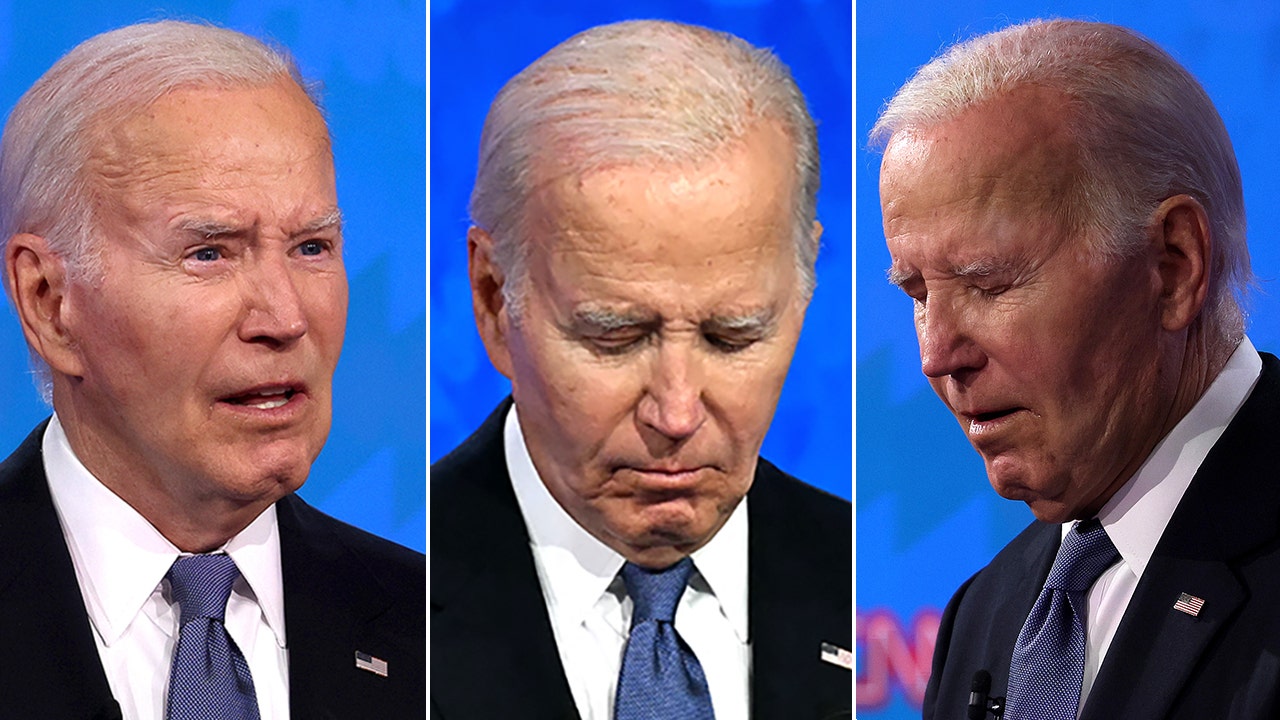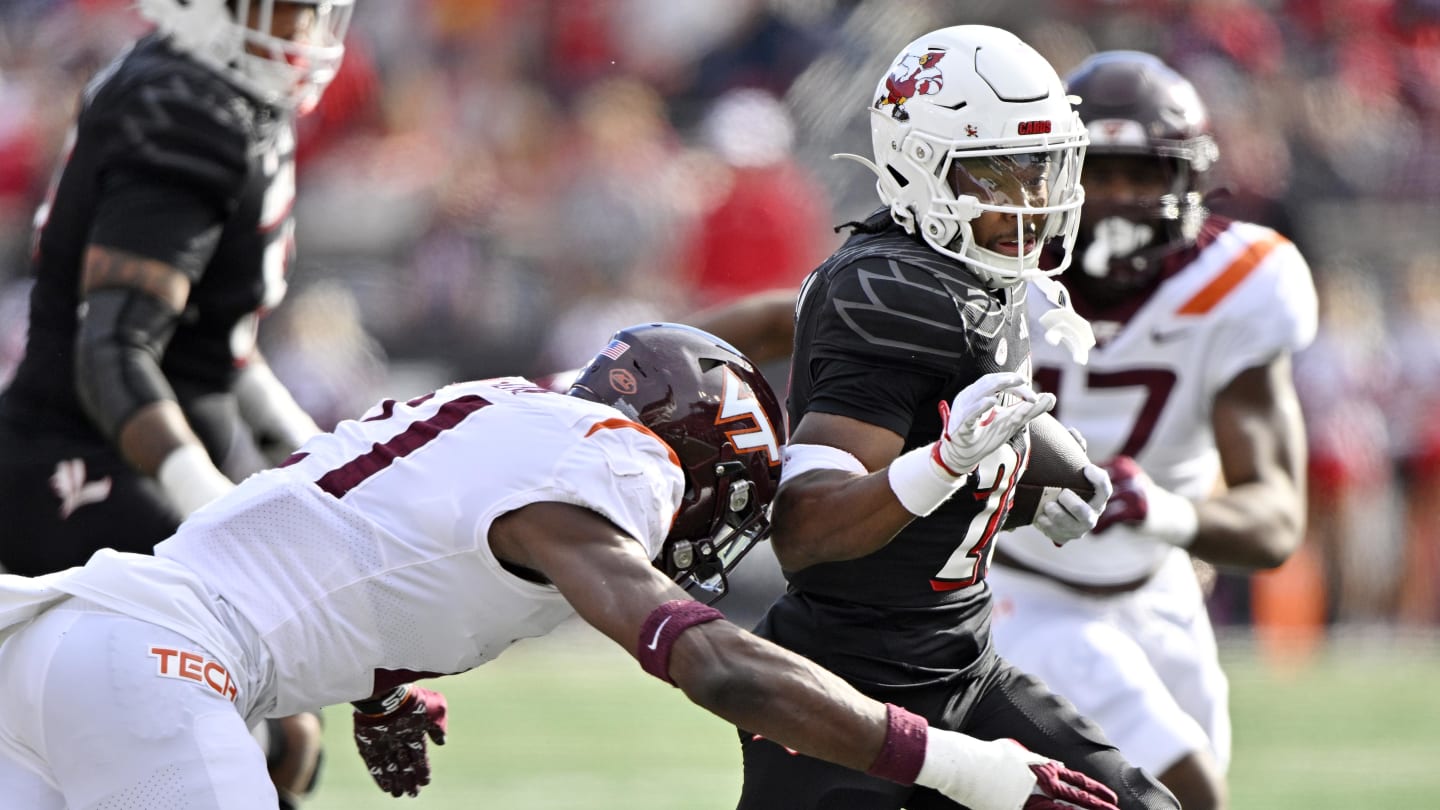Culture
Life as an MLB catcher: Violet bruises, ballooned ankles — and now, broken arms

Catching was a family tradition, so when Red Sox backstop Reese McGuire was 8 or 9, as he recalled, he tested out his new catching gear in the backyard on Christmas. As he crouched in the grass and baseballs caromed off his forearms, his grandfather told him: “It takes a tough kid to be a catcher. You have to enjoy the bruises.”
“We’re all kind of crazy, I think, to get back there,” said Diamondbacks catcher Tucker Barnhart, who has spent the last 11 seasons as a target squatting behind home plate.
Catching is not for the faint of heart — or thigh or wrist or toe or hip or knee or hand or shoulder.
Around the league, most catchers are banged up, always hovering on the edge of the injured list.
Late last month, Angels catcher Logan O’Hoppe was dealing with a black-and-blue shoulder, leaving him hardly able to lift his arm after absorbing a foul ball. His backup, Matt Thaiss, had a bruised hand after catching José Soriano’s 98-mph sinkers. Then O’Hoppe left a game last week after taking a foul ball to the hand. Giants catcher Patrick Bailey took a foul ball last month on the exposed area of the toe where the foot shield doesn’t quite reach. Three days later, he landed on the concussion injured list after taking a foul ball to the face mask. Red Sox catcher Connor Wong also recently dealt with a bruise under his toenail. Wong went on to describe a previous bruise to the teardrop of his quad, which made crouching painful and, well, crouching is a key part of the job.
“It’s our duty to be that tank back there and roll with the punches,” Wong said.
And for over a century, they have, accepting the bruises and strains that have come with the long-established territory. But as the game evolves, the demands of the job are making it even more hazardous; catchers have shifted closer to the plate to aid with pitch framing, but as The Athletic’s Katie Woo wrote last week, that has caused a rise in catcher interference calls and has opened up catchers to more punishment.
Last week, Cardinals catcher Willson Contreras was struck by the swing of New York Mets’ J.D. Martinez and has a broken left arm to show for it.
“There’s always a risk being a catcher,” Contreras said after the injury. “Could have been something different. It could’ve been off my knee, it could be a concussion. That risk is always going to be there.”
Contreras is expected to miss six to eight weeks with a fractured forearm. (AP Photo / Jeff Roberson)
Add it to the list. There’s a reason Barnhart and other veteran voices, including the thick Boston accent of Cleveland bench coach Craig Albernaz, can be heard on the first day of spring training every year relaying a familiar message: It’s all downhill from here.
“The amount of excitement,” Barnhart said about the dawn of a new season, “and, ‘Man, I feel great’ — and then Day 2 happens.”
They won’t return to 100 percent until the depths of winter, after they’ve recovered from every foul tip, every achy muscle, every nick and bruise in every nook of the body. The job is unrelenting and unforgiving; the pain and danger are ever-present.
And yet, for a team to succeed, so much necessarily falls on a catcher’s sore shoulders. They build a rapport with each pitcher. They know their tendencies and what’s been clicking. They know how they’ve attacked certain hitters in the past. They see the scouting reports on every single member of the opposing roster. That’s quite the learning curve for any fill-in, and Barnhart said it’s why catchers are so motivated to avoid time off.
“You have to have, for a lack of a better term,” Barnhart said, “a ‘f— it’ mentality.”
“If you cut my arm off,” said Guardians catcher Austin Hedges, “if I can play, I’m gonna go f—ing play.”
Well, as long as it’s his left arm, he clarified. He still has to throw the ball back to the pitcher 150 times a game, a tall order if he’s limited to his non-throwing hand.
Hedges scrolled through thousands of photos on his phone one day last week in search of evidence of the gnarliest bruise he could find. He located one that occupied nearly his entire right thigh, one with rich shades of indigo, plum and mulberry. He shook his head and laughed. The culprit? One single foul tip.

Austin Hedges’ thigh bruise. (Courtesy of Austin Hedges)
“The foul balls seem to always hit you in a spot where you don’t have gear or have the least amount of gear,” Barnhart said.
In 2022, Hedges suffered a low ankle sprain while lunging toward first base. Two weeks after that healed, he suffered a high ankle sprain as he tumbled into the dugout trying to corral a pop-up. His heel turned a dark violet and his ankle ballooned in size. He struggled to rotate while batting. He couldn’t comfortably position himself behind the plate or push off his backside, which resulted in him long-hopping the ball to second when trying to nab a base-stealer.
“You’re in pain, but you never get to shut it off,” Hedges said. “If you can play, you play. There’s no hesitation. You see how people react to getting hit by pitches. It doesn’t feel a whole lot better getting a foul tip off flesh. Then you just have to come back and act like it’s not even a thing.”

Austin Hedges’ swollen ankle. (Courtesy of Austin Hedges)
In June 2011, Chris Gimenez was scheduled to catch Mariners ace Félix Hernández one afternoon, but during batting practice the day before, Gimenez strained his left oblique. Seattle’s starting catcher, Miguel Olivo, experienced leg cramping that night, so Gimenez, who could barely inhale without cringing in pain, had to fill in for the final six innings.
For Gimenez, there was no dodging the pain in his side, especially when trying to corral Michael Pineda’s upper-90s heaters and when applying a tag at the plate on an assist from Ichiro. Gimenez tried to drop down a bunt when he batted since swinging proved unbearable. Chipper Jones shouted at him from third base, asking why he was bunting with two outs, but Mariners manager Eric Wedge had instructed Gimenez to do whatever caused him the least suffering. Seattle just wanted to keep Gimenez physically able to crouch behind the plate. He headed to the injured list the next day.
Albernaz was listed at 5-foot-8 and 185 pounds as a player, small stature for a catcher.
“I got plowed over a lot,” he said.
He also knew he couldn’t afford to sit out when granted a chance to play since he was an undrafted free agent who waited nine years for a big-league opportunity.
At one point, he thought his playing career had ended early, thanks to loose bodies in his knee getting wedged in his joint and leaving him unable to crouch.
Albernaz’s fellow coach in Cleveland, Sandy Alomar Jr., lasted 20 years as a major-league catcher. He has the battle scars to prove it. He underwent six surgeries on his left knee and three on his right.
“If you want to be a catcher,” Alomar said, “you’re never going to be 100 percent. Ever.”
Even now, he has a bone spur in his left foot from years of absorbing foul tips.
Even with all that catchers of Alomar’s generation had to deal with, it was rare for them to be struck by the hitter’s backswing. That has become an increasing problem for the modern catcher, as was highlighted by the Contreras injury.
Tigers manager A.J. Hinch said that teams are trying to walk the line between asking their catchers to steal strikes via closer-to-the-plate pitch framing, and putting them in dangerous situations by inching a bit too close.
“We do want our guys close enough to be impactful with the low strike but not walking into harm’s way,” Hinch said. “It’s a tough balance when the incentive to do it is real and the risk is extreme.”

GO DEEPER
Catcher’s interference calls are skyrocketing in MLB. It’s putting players at risk
Even as the risks become more intense, there are teams and individuals trying to find ways to make catching less of a burden on the human body. Hinch noted teams are searching for methods intended to “chip away at some of the physical responsibilities” of catching, whether altering their stances or adding bullpen catchers to lighten their to-do list. Giants manager Bob Melvin suggested everyday catchers like J.T. Realmuto are an endangered species.
With that in mind, some catchers have dropped one knee to the dirt to save the wear and tear on their knees, but several catchers and coaches stressed it’s not a cure-all. Hedges said it places more of a burden on his ankles, and it makes his inner thighs more vulnerable to foul tips.
“There’s nowhere for it to miss you,” said Jerry Narron, the Angels’ catching coach, who suggested catchers need “a football mentality.”
“It just seems like there’s always something that’s hurting,” Barnhart said.
“You feel like if you play a guy two out of three,” Melvin said, “that’s about as far as you can go with it.”
Most appearances at catcher, by season
| 2023 | 2022 | 2021 | 2003 |
|---|---|---|---|
|
J.T. Realmuto, 130 |
J.T. Realmuto, 132 |
Christian Vázquez, 125 |
Jason Kendall, 146 |
|
Cal Raleigh, 121 |
Sean Murphy, 116 |
Salvador Perez, 123 |
Ramón Hernández, 137 |
|
Elías Díaz, 120 |
Martín Maldonado, 110 |
Martín Maldonado, 119 |
Iván Rodriguez, 135 |
|
Jonah Heim, 120 |
Will Smith, 108 |
Yadier Molina, 118 |
Brad Ausmus/A.J. Pierzynski/Jorge Posada, 133 |
|
Shea Langeliers, 118 |
Cal Raleigh, 107 |
Will Smith, 115 |
Mike Matheny, 132 |
On Sept. 9, 2021, after socking a pair of solo homers against the Nationals, then-Braves catcher Stephen Vogt blocked a ball in the dirt, twisted his body and attempted an off-balance throw to third, where Juan Soto was trying to advance 90 feet. During his throwing motion, Vogt felt a pop in his hip. He couldn’t squat. Two muscles had ripped off his pelvis and he had a sports hernia. He needed season-ending surgery, which had him contemplating retirement after his team marched to a World Series title.
“You get beat up every single night as a catcher,” said Vogt, who now manages the Guardians. “It’s just part of the job.”
When Vogt made a mound visit during a recent series in Houston, he told catcher Bo Naylor: “Man, you’re getting your butt kicked tonight.’”
Naylor said nothing is more irritating than a foul ball off the hand. He added that he’ll occasionally be completing his pregame routine on a foam roller when a sharp pain pops up unexpectedly. That’s when he cycles through every possible pain-inducer from the previous night.
“Wait, why does this hurt? Oh yeah, I got a foul ball there last night,” he said.
McGuire said he wakes up “every day” with a mysterious bruise or ache. On April 30, it was his thumb, from a foul tip that struck his mitt at an awkward angle. Adrenaline fueled him the rest of that game, but it was stiff when he woke up the next day; he hadn’t realized how hard he had jammed it.
“Most of us have some sort of thumb injury,” said Cubs catcher Yan Gomes, who uses a protective guard and a stockpile of tape for added security.
All of them, not most, have some sort of something. Hinch, who caught for parts of seven big-league seasons, said it’s “the reason we all look like hell when we’re done playing.”
In August 2018, Joey Votto joined the Reds’ injured list, and Barnhart and Curt Casali, the club’s catchers, shared some of the first-base duties in his absence. For the catchers, it was like a spa day.
“We’d always joke with each other,” Barnhart said, “that, ‘Man, if my body always felt like this and I got to go to the plate, this is a great feeling. You don’t have to squat down. You’re not worried about getting hit. All you have to do is stand at first base and catch the ball? That’s it? My body feels great.’”
— The Athletic‘s C. Trent Rosecrans, Chad Jennings, Stephen J. Nesbitt, Sam Blum, Cody Stavenhagen and Andy McCullough contributed reporting.
(Top photo of Contreras suffering a broken arm: Dilip Vishwanat / Getty Images)

Culture
Mets shouldn't be buyers. They should be aggressive buyers at the deadline

NEW YORK — On Wednesday, in discussing how his bullpen plans shift moment to moment over a nine-inning game, Carlos Mendoza chuckled at the idea of forming a pregame plan and sticking to it.
“I don’t know that there’s ever a time you come up with a game plan and stick to it,” the Mets manager said. “Every time you make an adjustment because the game unfolds. … You have an idea, but then you have to make adjustments.”
Perhaps Mendoza’s boss, David Stearns, should take that advice when it comes to this season.
The Mets entered 2024 with a clear, consistent plan from ownership down to the clubhouse. While they did not possess the high expectations of previous spring trainings, they thought they could be legitimate contenders for the postseason while preserving a sustained window of contention in the future. And here they are, days ahead of the trade deadline, as legitimate contenders for the postseason who have preserved a sustained window of contention in the future.
But after another memorable win Thursday night, a walk-off 3-2 victory over Atlanta that felt like the inverse of so many nightmarish nights at Turner Field, maybe it’s time for Stearns and the New York front office to get a little greedy about 2024. Yes, the Mets are going to be buyers at the trade deadline. But let’s make a case for the Mets to do more than add a reliever in the next week, a case for the Mets to be aggressive buyers like they last were en route to an unexpected pennant in 2015.
The Mets are good enough
Let’s do some blind resumes for teams on the morning of July 26 over the years.
Blind resumes
|
Team
|
W
|
L
|
Pct.
|
RD
|
NL Rank
|
GB of Playoffs
|
|---|---|---|---|---|---|---|
|
A |
56 |
46 |
0.549 |
85 |
5 |
— |
|
B |
55 |
47 |
0.539 |
9 |
T5 |
— |
|
C |
55 |
47 |
0.539 |
49 |
T3 |
— |
|
D |
54 |
48 |
0.529 |
23 |
5 |
— |
|
E |
50 |
46 |
0.521 |
46 |
7 |
0.5 |
|
F |
48 |
51 |
0.485 |
36 |
10 |
6 |
OK, blindfolds off! What do those pretty similar teams all have in common? They all won the pennant.
NL pennant-winners (plus the Mets)
|
Team
|
W
|
L
|
Pct.
|
RD
|
NL Rank
|
GB of Playoffs
|
|---|---|---|---|---|---|---|
|
56 |
46 |
0.549 |
85 |
5 |
— |
|
|
55 |
47 |
0.539 |
9 |
T5 |
— |
|
|
55 |
47 |
0.539 |
49 |
T3 |
— |
|
|
54 |
48 |
0.529 |
23 |
5 |
— |
|
|
50 |
46 |
0.521 |
46 |
7 |
0.5 |
|
|
48 |
51 |
0.485 |
36 |
10 |
6 |
They were also pretty aggressive at the trade deadline. I classified the 2018 Dodgers (Manny Machado) and 2022 Phillies (David Robertson, Brandon Marsh and Noah Syndergaard) as All-in Buyers — teams that surrendered significant prospect capital for the present. The 2019 Nationals added three relievers, including the guy who would record the final out of the World Series. In 2021, Atlanta brought in four outfielders, including the NLCS and World Series MVPs. In 2023, Arizona dealt for a closer to better position itself for the postseason.
(For what it’s worth, the 2015 Mets, another All-in Buyer, were 50-48 with a negative-seven run differential on July 26.)
No, the Mets lack the kind of rotation and bullpen you generally rely on to carry you in October. However, New York possesses an offense that appears built for the postseason. As evidenced by its bashing of Gerrit Cole twice in the last month, the Mets’ lineup can go deep with the best of them. Only Baltimore has hit more homers since the Mets’ hot streak started May 30, and they’re tied for fourth in the majors in homers on the season — ahead of everyone but the Dodgers in the National League. On Thursday, New York was in the game against a dominant Chris Sale because Francisco Lindor turned one Sale mistake into two Mets runs.
Homers carry offenses come October. The similarly productive but differently constituted offense in 2022 tied for 15th in the league in home runs, then watched Atlanta and San Diego outhomer it in the biggest games of the season. This Mets offense can swing a short series with its power.
The National League is open
Here’s an important caveat: If I covered the Pirates or the Reds or the Padres or the Diamondbacks, I’d probably be making the exact same case. Because the National League is as open as it’s been in years.
Los Angeles and Atlanta have been the two best teams in the senior circuit for the last several seasons. Both are enduring more turbulent regular seasons than they’re accustomed to. The Dodgers continue to have health questions about their rotation, a dynamic that doomed them last October. Atlanta’s best hitter and best pitcher are out for the season. Its lineup looks like a shell of what the Mets are used to confronting.
While the Phillies have taken the mantle of the NL’s team to beat, they’re a team the Mets are pretty good at beating. They memorably went 14-5 against Philadelphia in 2022, and even during a down 2023 went 6-7 against it. This year, the Mets are 2-4 against the Phillies. And remarkably, since the start of the 2022 season, New York is 10-3 when facing either Aaron Nola or Zack Wheeler.
The timing actually clicks
It’s really tempting for teams to try manipulating their window of contention — to be cautious this year to put more eggs in a basket down the line. In doing so, however, they often miss the year to win.
The 2015 Mets could have been more cautious: Syndergaard and Steven Matz were rookies, Wheeler was hurt, the NL had several very good teams — surely the Mets’ best chance to advance in October would be down the road? As it turns out, that young rotation was never as healthy or as dominant as it was right then and there, and the Mets’ aggressiveness paid off in a pennant.
(Contrast that with the 2013-2015 Pirates, who never made the big move to push a very good team over the top. They still haven’t won a postseason series since 1979.)
For the Mets, it’s also fair to ask: What year, specifically, are they waiting for? Injuries to some key prospects this year mean New York won’t head into spring training 2025 planning to give an everyday spot to a talented rookie. The full incorporation of guys like Jett Williams, Drew Gilbert, Luisangel Acuña and Ryan Clifford won’t happen until 2026 — by which point Lindor will be 32 and Brandon Nimmo 33, on the outskirts of their primes.
The goal is to open a sustained window of contention and pounce on legitimate opportunities to win divisions, pennants and championships. The Mets are there. The two players they have signed long-term are having career-best years. Their cornerstone first baseman might not be here next year.
The window of contention is already open.
What does this mean?
Let’s be honest: This is where most columns like this end. There’s all that reasoning for going for it, now it’s Stearns’ job to turn that into something.
But I’d be remiss if I didn’t mention that the current shape of the deadline market makes it difficult to go for it. Teams like the Pirates and Reds and Padres and Diamondbacks are all still in it in the National League, and the number of sellers is tinier than usual. The best starter likely to be traded may not be able to start much more this season. The best reliever likely to be traded has a walk rate you wouldn’t comfortably hit on in blackjack.
It’s harder to provide the kind of blueprint for the deadline that I do for the offseason because acquisition costs in trades are so much more difficult to project than open-market salaries. So I’ll settle for suggestions that would fit more of an all-in approach.
1. Engage the White Sox on Garrett Crochet with the understanding you’d be acquiring him to pitch out of the bullpen in 2024. The Athletic reported Thursday that Crochet would prefer to stay on a starter’s schedule (albeit with limited innings) down the stretch of this season unless an acquiring team signs him to a contract extension.
As I outlined Thursday morning, the Mets could use a long-term ace. Here’s a 25-year-old left-handed All-Star who leads the league in strikeouts and is interested in a long-term extension. Those all feel like good things. (Like Wheeler, Crochet’s likely arbitration salaries for the next two seasons will be suppressed by his lack of availability up to this point in his career. Thus, a long-term extension would cost less against the luxury tax than it might otherwise.)
Trade for Crochet, extend him and make him a multi-inning reliever with scheduled appearances the rest of the way. Imagine him coming in behind your right-handed starters in the postseason and serving as a one-man bridge to Edwin Díaz. Put him back in the rotation in 2025 and beyond. That might be worth the significant package of prospects it would require, as it would mean the Mets wouldn’t have to dive into the deep end of the starting pitching market this winter for a free agent already in his 30s.
2. If Crochet proves too much, combine a rotation upgrade — chiefly, a pitcher who misses more bats than the current starters — with two additions in the pen and one to the bench.
In the rotation, Detroit’s Jack Flaherty and Toronto’s Yusei Kikuchi come to mind. Flaherty will cost a good amount, but he too could become a viable option to re-sign.
For the bullpen, one high-leverage lefty should be the priority. Scroll past Tanner Scott to his teammate Andrew Nardi or to The Athletic’s years-long target Andrew Chafin of the Tigers. Another multi-inning arm could help keep the group fresh, as well. Cincinnati’s Buck Farmer or Detroit’s Alex Faedo could work there.
The final piece would be a versatile bench contributor who could protect the Mets against regression or injury at a few different positions. Detroit’s Andy Ibañez, Tampa Bay’s Amed Rosario, Toronto’s Isiah Kiner-Falefa and Oakland’s Abraham Toro could fit that role.
(Photo of José Buttó: Adam Hunger / Getty Images)
Culture
A history of spying in football: Drones, interns at training and kit men in ceilings

Are not even the Olympic Games sacrosanct?
Yeah, you’re right. Probably not, given their long history of judging corruption, state boycotts and widespread doping.
But the news which broke on Tuesday, three days before the opening ceremony and hours before the first action in the 2024 Games’ football tournament, meant that the cherished Olympic values of fair play stood in tatters even before organisers emblazoned that message across the Parisien sky and the River Seine.
That it was Canada who performed such an egregious breach of the rules — by all stereotypes a country known for its people being polite, respectful, laidback and just terribly nice — only adds to the ironic drama.
There are five rings in the Olympic logo — take just two of them intertwined, and they resemble a pair of binoculars.
So this is what happened…
On Tuesday, at a training session ahead of their opening match of the group stage in Saint-Etienne on Thursday, staff members from the New Zealand women’s football team noticed a drone hovering above them.
Bev Priestman, the Canada coach, watching her team in action earlier this year (Jason Mowry/Getty Images)
They called the on-site police, who detained the device’s operator, who was later revealed to be a staff member from the Canadian team, the reigning Olympic women’s champions, and their opponents in that opener today.
In an initial statement, the Canadian Olympic Committee (COC) apologised — but more was to come.
The following day, it became clear that there had been two drone incidents, with the other taking place five days earlier, on July 19. Now facing severe sanctions, the COC needed to act.
Joseph Lombardi, an “unaccredited analyst”, and Jasmine Mander, a member of the coaching staff who oversees Lombardi, have been removed from the team and sent home and Canada’s English head coach Beverly Priestman has voluntarily stepped down from being on the touchline for the New Zealand game.
“On behalf of our entire team, I first and foremost want to apologize to the players and staff at New Zealand Football and to the players on Team Canada,” Priestman said. “This does not represent the values that our team stand for.”
That final sentence is a little difficult to justify, given that spying on another team’s training is hardly an accidental action — nobody finds themselves flying a $2,000 piece of tech over their next opponents — twice — by mistake. Rather, it comes as a product of culture and command.
“I am ultimately responsible for conduct in our program,” Priestman added. “Accordingly, to emphasize our team’s commitment to integrity, I have decided to voluntarily withdraw from coaching the match on Thursday. In the spirit of accountability, I do this with the interests of both teams in mind and to ensure everyone feels that the sportsmanship of this game is upheld.”
This may be new to the Olympics — but spying in football is old business.
Teams sending scouts to watch the next side they are going to play at training probably predates the invention of the offside rule. In fairness, though, we do not know if ancient Olympian Theagenes of Thasos sent emissaries to watch Arrichion of Phigalia working on his moves.

Didier Deschamps, the France head coach, spotted a drone over training at the 2014 World Cup (Martin Rose/Getty Images)
In international football, France men’s manager Didier Deschamps noticed a drone above his players as they trained at the 2014 World Cup in Brazil — it was never discovered which, if any, of their group-stage rivals Ecuador, Honduras and Switzerland it belonged to.
Go back two more decades and ahead of a vital away World Cup qualifier against Norway in 1993, England manager Graham Taylor was so convinced his team were being watched that he moved their training base to a military facility. The issue? That new location was near the house of the chief sportswriter of one of Norway’s leading newspapers, who subsequently published their tactics the next morning. England lost, 2-0, in Oslo, ended up missing out on the 1994 World Cup, and Taylor got sacked.
Similarly, in a case of paranoia outweighing perspective, the Chilean football federation once sent up their own device to destroy a drone hovering over their session before a match against Argentina. It was perhaps football’s first case of aerial warfare since Roy Keane’s infamous tackle on Alfie Haaland. In this case, it turned out the questionable drone was a surveying tool being used by a Chilean telecommunications company.
But there is one example of spying which did emanate from South America — when, in early 2019, Leeds United’s Argentine head coach Marcelo Bielsa admitted sending an intern to watch the following weekend’s opponents Derby County work on their formation, set pieces and so on. It was not the first time.
“We watched training sessions of all the opponents before we played them,” Bielsa, now Uruguay’s head coach said. In Argentina, this practice was common apparently, and one he had continued after coming to work in Europe.
Officers have just attended the Training Ground for @dcfcofficial After a suspicious male was seen at the perimeter fence. Excellent searching conducted & male was located. All checks above board!
Keeping the team safe to bring home a win against #LUFC on 11th! #SpyingIsCheating pic.twitter.com/a12Zj8gISX— Derby Response – This account is closing (@DerbyResponse) January 10, 2019
Derby and Frank Lampard, their manager at the time, were furious. When Bielsa rang the former Chelsea and England midfielder to explain himself, there was no apology — but instead, in broken English, he attempted to remove any ambiguity around the circumstances.
Leeds won the ensuing match, 2-0 — and the following week, Bielsa held an unprecedented press conference for local journalists, 66 minutes long, in which he used a PowerPoint presentation to demonstrate the full extent of the analysis he carried out on opposition clubs.
For Bielsa, who held open training sessions throughout his time at Athletic Bilbao in Spain, watching teams going through their tactical preparations like this was not spying, but simply gathering information.

Leeds’ Bielsa, centre, admitted spying on Lampard, right, and Derby (Alex Dodd – CameraSport via Getty Images)
It was later pointed out by Leeds fans that, as a player, Lampard has been part of a Chelsea side which profited from similar, um, info-gathering missions.
In an interview with UK newspaper the Telegraph, former Chelsea manager Andre Villas-Boas admitted that, in his time as an assistant at the London club under Jose Mourinho, he would “travel to training grounds, often incognito, and look at our opponents’ mental and physical state before drawing my conclusions”. Chelsea won the Premier League title twice with Mourinho and Villas-Boas in situ.
Given the amount of information that rival clubs can draw on, some coaches are simply not too bothered by allegations of spying. In 2018, German Bundesliga side Werder Bremen used a drone to spy on Hoffenheim — but Hoffenheim’s coach Julian Nagelsmann, now manager of Germany’s national team, brushed off its impact.
“I’m not really angry at the analyst doing his job,” Nagelsmann said, before adding it was “commendable” that Bremen were going to such lengths to try to win.
Similarly, in the aftermath of the Leeds incident, former striker Gary Taylor-Fletcher recalled an incident from his Lincoln City side’s 2003-04 League Two play-off semi-final second leg away to Huddersfield Town.
While the Lincoln players were receiving their half-time team talk, Taylor-Fletcher tweeted, a polystyrene ceiling tile broke and then fell down — revealing the sizable heft of longtime Huddersfield kit man Andy Brook listening from the cavity above. Lincoln went on to lose the tie, while their opponents lost their dignity — but did end up getting promoted. And Taylor-Fletcher can’t have been too annoyed because, a year later, he left Lincoln for… Huddersfield.
Football is not alone in this sort of espionage — and other sports can be much more high-tech.
The McLaren Formula 1 team were given the largest fine in sporting history — $100million — and thrown out of the sport’s 2007 Constructors’ Championship after senior engineer Mike Coughlan received technical design documents which had been leaked from rivals Ferrari.
There have also been several high-profile incidents in American football.
Also in 2007, the New England Patriots, the most successful NFL team of recent years with six Super Bowl wins since the turn of the century, were punished for recording the defensive signals given to players during a game by coaches of the New York Jets. New England’s legendary head coach Bill Belichick was fined $500,000 — the maximum allowed by the league, and the most in NFL history — while the team were denied their first-round pick in the following year’s player draft.

Belichick in 2007, when his team were caught recording the New York Jets’ defensive signals (AP Photo/Mel Evans, File)
Does cheating prosper? Well, New England won all 16 games in the 2007 regular season — but were surprisingly beaten in the Super Bowl by the New York Giants.
And it’s not just the professionals in the gridiron game. Last October, the University of Michigan’s head coach Jim Harbaugh was suspended over a similar sign-stealing scandal which quickly escalated to involve allegations also levelled at several other college teams. Harbaugh was banned for several games, but Michigan went on to win the U.S. college national championship on his return. Harbaugh has since moved on to become head coach of the NFL’s Los Angeles Chargers.
So this is the bottom line: teams cheat.
In a multimillion (or even billion) dollar/pound/euro industry, marginal gains like those detailed here are worth the risk of detection. For every Canada, Leeds and Michigan caught, there are clubs and sides whose operatives get away with it.
Widespread but not necessarily endemic, it is both serious and not serious, funny and infuriating, the natural by-product of a game being taken as lifeblood.
Back in the ancient Olympics, contemporary accounts reveal athletes being bribed to say they were from certain city-states rather than others — facing a potential punishment of public flogging if they were caught.
Things have not really changed — and the punishment, at least to the guilty party’s public reputation, is not so different either.
Teams are willing to run that risk.
(Top photos: Getty Images; design: Eamonn Dalton)
Culture
Esteban Ocon joins Haas F1 for 2025 season

Esteban Ocon will race for Haas in Formula One from 2025 after signing a multi-year deal with the American team.
Haas announced on Thursday ahead of this weekend’s Belgian Grand Prix that Ocon, 27, would complete its line-up for next year alongside British rookie Oliver Bearman, who will graduate from Formula Two.
The Frenchman will become the first grand prix winner to race for Haas, and the move sees him reunite with Ayao Komatsu, Haas’s team principal, who served as his engineer for his maiden F1 test with Lotus back in 2014.
Ocon said in a statement that he and Haas had enjoyed “honest and fruitful discussions these last few months” about the future, and that he would be “joining a very ambitious racing team, whose spirit, work ethic, and undeniable upward trajectory has really impressed me.”
The move means Haas will run an all-new F1 line-up for 2025 as Ocon and Bearman replace Nico Hulkenberg and Kevin Magnussen, both of whom were already confirmed to be leaving the team.
GO DEEPER
Oliver Bearman announced as Haas F1 driver for 2025 season
“The experience he brings, not just from his own talent base but also from working for a manufacturer team, will be advantageous to us in our growth as an organization,” Komatsu said of Ocon.
“It was vital we had a driver with experience in beside Oliver Bearman next year, but Esteban’s only 27 — he’s still young with a lot to prove as well. I think we have a hungry, dynamic driver pairing.”
What led Ocon to Haas?
Since Ocon announced in June that he would be leaving Alpine upon the expiration of his contract at the end of the season, Haas has always looked like his most likely destination.
Ocon was always going to be part of what is proving to be a very fluid F1 driver market for 2025, offering race-winning experience to any interested teams after his shock victory for Alpine at the 2021 Hungarian Grand Prix.
There were talks with a number of teams over a potential drive for next year, with Williams previously holding an interest in him as an alternative to its top target — Carlos Sainz.

Ocon is currently racing with Alpine (Bryn Lennon – Formula 1/Formula 1 via Getty Images)
But it became clear in recent weeks that a deal with Haas was close to being finalized, particularly after the team confirmed Magnussen’s departure in Hungary.
Ocon said last week it was “very clear what our intentions are for the future,” with the hope of getting a deal announced before the summer break, which starts next week.
He will join a Haas team currently enjoying an upswing in performance under Komatsu. It lies seventh in the constructors standings, and has already scored more than double its points tally from the entirety of last year.
A fresh start for Ocon
The move will serve as a new beginning to Ocon, whose final season with Alpine has proven to be a frustrating one.
Between the team’s lack of performance and tension with teammate Pierre Gasly that flared after their collision on the opening lap in Monaco, there was always the feeling a chapter was ending, even prior to news of Ocon’s departure.
This move will end Ocon’s long-standing relationship with the Enstone-based team, known previously as Renault and Lotus, which began more than 10 years ago. He joined their junior academy at 14, but their financial issues led Mercedes to take him under its wing.
Mercedes helped Ocon get onto the F1 grid in 2016 and quickly win praise for his performances and consistency while driving for Force India, leading to him even being a consideration for a Mercedes F1 seat in 2020 as teammate to Lewis Hamilton.

GO DEEPER
6 candidates to replace Lewis Hamilton at Mercedes
But he was never seriously on Mercedes’ radar this time around as they look to replace Hamilton, with the vacant seat likely to go to its 17-year-old protege, Andrea Kimi Antonelli, who is racing in F2.
With Haas, Ocon will get long-term stability and, for the first time in his career, have the chance to help build a team up by serving as the experienced head alongside a much younger teammate in Bearman.
(Andrea Diodato/NurPhoto via Getty Images)
-

 World1 week ago
World1 week agoOne dead after car crashes into restaurant in Paris
-

 Midwest1 week ago
Midwest1 week agoMichigan rep posts video response to Stephen Colbert's joke about his RNC speech: 'Touché'
-

 News1 week ago
News1 week agoVideo: Young Republicans on Why Their Party Isn’t Reaching Gen Z (And What They Can Do About It)
-

 News1 week ago
News1 week agoIn Milwaukee, Black Voters Struggle to Find a Home With Either Party
-

 Politics1 week ago
Politics1 week agoFox News Politics: The Call is Coming from Inside the House
-

 News1 week ago
News1 week agoVideo: J.D. Vance Accepts Vice-Presidential Nomination
-

 Movie Reviews1 week ago
Movie Reviews1 week agoMovie Review: A new generation drives into the storm in rousing ‘Twisters’
-

 World1 week ago
World1 week agoTrump to take RNC stage for first speech since assassination attempt


















